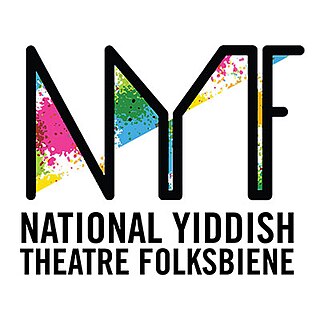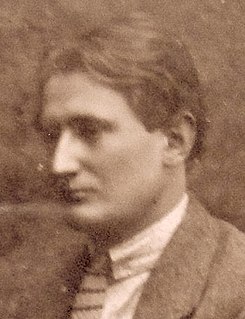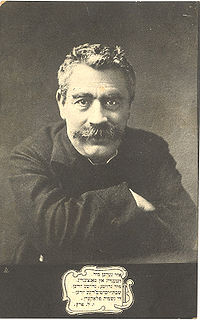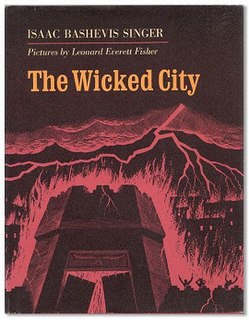 W
WYiddish literature encompasses all those belles-lettres written in Yiddish, the language of Ashkenazic Jewry which is related to Middle High German. The history of Yiddish, with its roots in central Europe and locus for centuries in Eastern Europe, is evident in its literature.
 W
WThe Agunah is a 1974 English translation by Curt Leviant of the 1961 Yiddish novel Di Agune by Chaim Grade. It was also published in a 1962 Hebrew translation, Ha-Agunah (העגונה).
 W
WIn the early part of the sixteenth century, there were already attempts to translate the Bible into Yiddish, including Hebrew-Yiddish biblical dictionaries. One of the most authoritative was the Bible that Jekuthiel Blitz translated in 1678.
 W
WAlexander Bogen was a Polish-Israeli visual artist, a decorated leader of partisans during World War II, a key player in 20th century Yiddish culture, and one of the trailblazers for art education and Artists' associations in the emerging state of Israel.
 W
WThe Bovo-Bukh, written in 1507–1508 by Elia Levita, was the most popular chivalric romance in Yiddish. It was first printed in 1541, being the first non-religious book to be printed in Yiddish. For five centuries, it endured at least 40 editions. It is written in ottava rima and, according to Sol Liptzin, is "generally regarded as the most outstanding poetic work in Old Yiddish". [Liptzin, 1972, 5, 7]
 W
WCelia Dropkin was a Yiddish poet.
 W
WDukus Horant is a 14th-century narrative poem in Judeo-German (Proto-Yiddish).
 W
WEnemies, A Love Story is a novel by Isaac Bashevis Singer first published serially in the Jewish Daily Forward in 1966. The English translation was published in 1972.
 W
WErev is a 1983 novel by Eli Schechtman. Erev's first edition is the beginning of Eli Schechtman's novel that was written in USSR and contained four books. The novel was published in in magazine version - from 1961 up to 1968 and in book - in 1965. The novel tells about the life of Russian Jews of the early twentieth century. The full Erev written and published in Israel in 1983 contain seven books. The novel tells about the life of Russian Jews of the early twentieth century until the end of World War II.
 W
WThe Family Moskat is a novel written by Isaac Bashevis Singer, originally written in Yiddish. It was Singer's first book published in English.
 W
WThe National Yiddish Theatre Folksbiene, commonly known as NYTF, is a professional theater company in New York City which produces both Yiddish plays and plays translated into Yiddish, in a theater equipped with simultaneous superscript translation into English. The company's leadership consists of executive director Dominick Balletta and artistic director Zalmen Mlotek. The board is co-chaired by Sandra Cahn and Carol Levin.
 W
WThe Golem is a novel written in 1969 by Isaac Bashevis Singer that was first published in The Jewish Daily Forward. It was rewritten and translated into English in 1981.
 W
WThe Golem is a 1921 "dramatic poem in eight scenes" by H. Leivick. The story is a reworking of a legend of Judah Loew ben Bezalel, known as the Maharal, a great rabbi of Prague. In the legend, he animates a golem, a being crafted from inanimate material. The same legends had provided the ground for Gustav Meyrink's 1915 novel of the same name.
 W
WJewish American literature holds an essential place in the literary history of the United States. It encompasses traditions of writing in English, primarily, as well as in other languages, the most important of which has been Yiddish. While critics and authors generally acknowledge the notion of a distinctive corpus and practice of writing about Jewishness in America, many writers resist being pigeonholed as "Jewish voices." Also, many nominally Jewish writers cannot be considered representative of Jewish American literature, one example being Isaac Asimov.
 W
WThe Library Of Agudas Chassidei Chabad is a research library owned by Agudas Chasidei Chabad. Its content had been collected by the Chabad-Lubavitch Rebbes. The library is housed next to the Lubavitch world headquarters at 770 Eastern Parkway in Brooklyn, New York, and is utilized by Chabad and general Judaic scholars. It is viewed by thousands of visitors each year.
 W
WYakov Lidski was a Warsaw-based Jewish bookseller and publisher, pioneer of Yiddish literature publishing. Founder of “Progress” publishing house, which was the first to publish modern Yiddish literature, and co-founder and owner of the important publishing syndicate “Central.”
 W
WThe Magician of Lublin is a novel by Nobel Laureate Isaac Bashevis Singer. Though originally written in Yiddish, it was first published in English: in 1960 in the U.S.A. by Noonday, and in 1961 in the U.K. by Secker & Warburg. In 1971, the book was published in Yiddish by Hamenorah.
 W
WMendele Mocher Sforim, born Sholem Yankev Abramovich or S. J. Abramowitch, was a Jewish author and one of the founders of modern Yiddish and Hebrew literature.
 W
WKadia Molodowsky was a Belarusian-Jewish-born American poet and writer in the Yiddish language, and a teacher of Yiddish and Hebrew. She published six collections of poetry during her lifetime, and was a widely recognized figure in Yiddish poetry during the twentieth century.
 W
WOyfn Sheydweg is a 1930 novel by Eli Schechtman. It is his first published work.
 W
WIsaac Leib Peretz, also sometimes written Yitskhok Leybush Peretz was a Yiddish language author and playwright from Poland. Payson R. Stevens, Charles M. Levine, and Sol Steinmetz count him with Mendele Mokher Seforim and Sholem Aleichem as one of the three great classical Yiddish writers. Sol Liptzin wrote: "Yitzkhok Leibush Peretz was the great awakener of Yiddish-speaking Jewry and Sholom Aleichem its comforter.... Peretz aroused in his readers the will for self-emancipation, the will for resistance against the many humiliations to which they were being subjected."
 W
WAvrom Reyzen was a Yiddish writer, poet and editor, and the elder brother of the Yiddishist Zalman Reisen.
 W
WRingen oyf der Neshome is Eli Schechtman's autobiographical novel in two volumes. Volume 1 was published in 1981 and volume 2 was published in 1988. The novel deals with the lives of Jews in Russia and in Israel from the beginning until the end of the twentieth century.
 W
WEli Schechtman was a Yiddish writer. He defined the purpose of his work as follows: "My mission in Jewish literature was and still is ... to show to those who negate the power of the Galut, how mighty – spiritually and physically – were the generations who grew up in that Galut, even in the most godforsaken places."
 W
WShadows on the Hudson is a novel by Isaac Bashevis Singer. First serialized in The Forward, a Yiddish newspaper, it was published in book form in 1957. It was translated into English by Joseph Sherman in 1998. The book follows a group of prosperous Jewish refugees in New York City following World War II, just prior to the founding of the state of Israel.
 W
WFradl Shtok was a Jewish-American Yiddish-language poet and writer, who immigrated to the United States from Galicia, Austria-Hungary, at the age of 18 or 19. She is known as one of the first Yiddish poets to use the sonnet form; and her stories, which were less well received than her poems in her lifetime, have since been recognized as innovative for their exploration of subjectivity, and, in particular, for their depiction of Jewish female characters at odds with traditional roles and expectations.
 W
WTevye the Dairyman is the fictional narrator and protagonist of a series of short stories by Sholem Aleichem, and various adaptations of them, the most famous being the 1964 stage musical Fiddler on the Roof and its 1971 film adaptation. Tevye is a pious Jewish milkman living in Tsarist Russia, the patriarch of a family including several troublesome daughters. The village of Boyberik, where the stories are set, is based on the town of Boyarka, Ukraine, then part of the Russian Empire. The stories were written in Yiddish and first published in 1894; they have been published as Tevye and His Daughters, Tevye's Daughters, Tevye the Milkman, and Tevye the Dairyman.
 W
WYiddish theatre consists of plays written and performed primarily by Jews in Yiddish, the language of the Central European Ashkenazi Jewish community. The range of Yiddish theatre is broad: operetta, musical comedy, and satiric or nostalgic revues; melodrama; naturalist drama; expressionist and modernist plays. At its height, its geographical scope was comparably broad: from the late 19th century until just before World War II, professional Yiddish theatre could be found throughout the heavily Jewish areas of Eastern and East Central Europe, but also in Berlin, London, Paris, Buenos Aires and New York City.
 W
WThe Tseno Ureno, also spelt Tsene-rene, Tz'enah Ur'enah, sometimes called the Women's Bible, is a Yiddish-language prose work of c.1590s whose structure parallels the weekly Torah portions and Haftarahs used in Jewish prayer services. The book was written by Jacob ben Isaac Ashkenazi (1550–1625) of Janów Lubelski, and mixes Biblical passages with teachings from Judaism's Oral Torah such as the Talmud's Aggadah and Midrash, which are sometimes called "parables, allegories, short stories, anecdotes, legends, and admonitions" by secular writers.
 W
WVon Dem Alten Kloster is a 1931 book by Herman Solnik written in Yiddish. Published in Warsaw, the book contains legends and narrations related to Błaszki and the district of Kalisz.
 W
WThe Wicked City is a novel for children by Isaac Bashevis Singer. Originally written in Yiddish it was published in English in 1972. The book is a retelling of the story of Lot and the people of Sodom from the Bible, though Singer omits certain elements of the Bible story.
 W
WThe Yeshiva is an English translation by Curt Leviant of the Yiddish novel Tsemakh Atlas by Chaim Grade. It was published in two volumes in Yiddish and also in translation. It was also published in a Hebrew translation, with the same title as the Yiddish.
 W
WThe Yiddish Book Center, located on the campus of Hampshire College in Amherst, Massachusetts, United States, is a cultural institution dedicated to the preservation of books in the Yiddish language, as well as the culture and history those books represent. It is one of ten western Massachusetts museums constituting the Museums10 consortium.